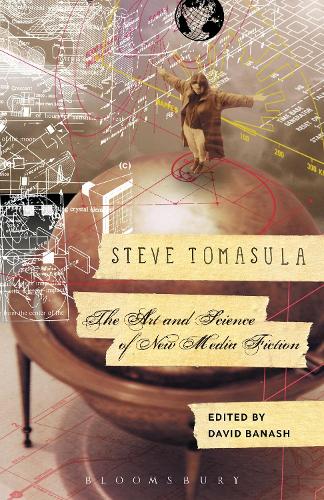
Steve Tomasula: The Art and Science of New Media Fiction
(Hardback)
Publishing Details
Steve Tomasula: The Art and Science of New Media Fiction
By (Author) Professor David Banash
Bloomsbury Publishing PLC
Bloomsbury Academic USA
16th July 2015
United States
Classifications
Tertiary Education
Non Fiction
Literary studies: fiction, novelists and prose writers
813.6
Physical Properties
Hardback
344
Width 146mm, Height 218mm, Spine 24mm
557g
Description
Steve Tomasula's work exists at the cutting edges of scientific knowledge and literary techniques. As such, it demands consideration from multiple perspectives and from critics who can guide the reader through the formal innovations and multimedia involutions while providing critical scientific, aesthetic, historical, and technical contexts. This book, the first of its kind, provides this framework, showing readers the richness and relevance of the worlds Tomasula constructs. Steve Tomasula's work is redefining the form of the novel, reinventing the practice of reading, and wrestling with the most urgent questions raised by massive transformations of media and biotechnologies. His work not only charts these changes, it formulates the problems that we have making meaning in our radically changing technological contexts. Vast in scope, inventive in form, and intimate in voice, his novels, short stories, and essays are read and taught by a surprisingly diverse array of scholars in fields ranging from contemporary experimental writing and literary criticism to the history of science, biotechnology and bioart, book studies, and digital humanities.
Reviews
David Banash and this excellent collection do more than bring Steve Tomasulas astounding work to a wider audience. This book reveals the multiform layers of interlacing aesthetics that, like a tumor, a clock, a biological accident, and the birth of the alphabet, assemble into patterns that are playful, enigmatic, and wondrous. Tomasula was once the best-kept secret in contemporary narrative. Now, his work is suitably viral. * Davis Schneiderman, Associate Dean of the Faculty and Professor of English, Lake Forest College, USA, and &NOW Board Member *
A groundbreaking collection of essays on an author who is at the cutting edge of experimental fiction in the twenty-first century. * Marcus Boon, Professor of English, York University, Canada, and author of In Praise of Copying (2010) *
Steve Tomasulas eco-hybrid, post-cyber, transmedia fiction works are as hard to characterize as they are engaging. Only a genetically engineered polydactyl would have enough thumbs to signal the enthusiasm generated by the digerati-literati lucky enough to have encountered them in the first decade of the new millennium. Varied and eclectic, sui generis and virtuosic, Tomasulas major works get their due in this volume as a wide range of authors, eager and equal to the task, position his activities within the critical discourses proliferating at the intersection of creative thought and literary philosophy. * Johanna Drucker, Professor of Information Studies, University of California, Los Angeles, USA *
What is a work that arrives before it is written What is a work that emerges from the soft tissue of the body at different points in a given era How do make a new kind of writing derived from the oscillation between two rectangles of light; frames that might include surveillance, animal ethologies and anatomies, as much as a philosophy of the book-to-be This extraordinary anthology constellates readings of Tomasula novels and intermedia projects that offer us a glimpse of the novel as installation, as 'nature opening out to culture.' As someone interested in what happens at the intersection of narrative and biology, the instance of mutation as a trait transmitted between and across texts of different kinds, I was very inspired by the essays in this remarkable collection. David Banash has curated something that makes it possible to come to writing again, differently. The introduction, co-written with Andrea Spain, was, itself, a fierce and brilliant consideration of 'composition, emergence, sensation': the intense, unpredictable and sometimes violent energies that underlie Tomasulas work in its incipient stages, but also carry it through a duration. Which is prose. Which is this other kind of radical art. An art or novel that appears only when we orient towards it. In this way. * Bhanu Kapil, Associate Professor of Writing, Naropa University, USA, and author of Ban en Banlieue (2015) *
Author Bio
David Banash is Professor of English at Western Illinois University, USA. He is the author of Collage Culture: Readymades, Meaning, the Age of Consumption (2013) and co-editor of Contemporary Collecting: Objects, Practices, and the Fate of Things (2013). His essays and reviews have appeared in American Book Review, Bad Subjects: Political Education for Everyday Life, Science Fiction Studies, Paradoxa, PopMatters, Postmodern Culture, Reconstruction, and the Iowa Review.
